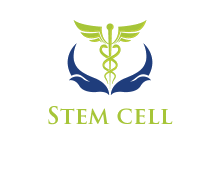


Scientists with Great Contribution to Stem Cell Research
In 1956, Dr E Donnal Thomas performed the first successful bone marrow transplantation between a related donor and recipient is performed in New York. The patient, who has leukaemia, is given radiotherapy and then treated with healthy bone marrow from an identical twin.
His team carried out its first transplant using a matched sibling donor for a patient with leukemia in 1969. Eight years later, the team performed the first matched transplant from an unrelated donor, a success that led to the formation of a national registry that now includes more than 11 million marrow donors.
Dr Thomas receives the Nobel Prize in Physiology or Medicine for his pioneering work on bone marrow transplants in 1990.
Dr E Donnall Thomas, the Father of Bone Marrow Transplantation
1

Till & McCulloch, the Fathers of Stem Cell Science
Dr Paolo Macchiarini, producing synthetic trachea seeded with stem cells
Jim Till and Ernest McCulloch didn’t exactly go looking for stem cells, but stumbled upon them in their search to understand the effects of radiation in a new atomic age.
Their discovery happened in 1961 in Toronto, Canada while injecting bone marrow into mice. They observed small raised lumps growing on the spleens of the mice and speculated that each lump arose from a single marrow cell: perhaps a stem cell. With this new knowledge, their research provided a scientific explanation for why bone marrow transplantations work and published their high impact paper on hematopoietic stem cells in Nature: “Cytological demonstration of the clonal nature of spleen colonies derived from transplanted mouse marrow cells” in 1963.
The team went largely without public recognition until 2005 when they were both awarded the Albert Lasker Award for Basic Medical Research, often known as “America’s Nobel.” At that time, the Lasker Foundation made the importance of Till and McCulloch’s contribution indisputable: “Their work laid the foundation for all current work on adult and embryonic stem cells and transformed the study of blood-cell specialization from a field of observational science to a quantitative experimental discipline.”
In 2008 the first full transplant of a human organ grown from adult stem cells was carried out by Paolo Macchiarini, at the Hospital Clínic of Barcelona on Claudia Castillo, a Colombian female adult whose trachea had collapsed due to tuberculosis. Researchers from the University of Padua, the University of Bristol, and Politecnico di Milano harvested a section of trachea from a donor and stripped off the cells that could cause an immune reaction, leaving a grey trunk of cartilage. This section of trachea was then "seeded" with stem cells taken from Ms. Castillo's bone marrow and a new section of trachea was grown in the laboratory over four days.
The new section of trachea was then transplanted into the left main bronchus of the patient. Because the stem cells were harvested from the patient's own bone marrow Professor Macchiarini did not think it was necessary for her to be given anti-rejection (immunosuppressive) medication and when the procedure was reported four months later in The Lancet, the patient's immune system was showing no signs of rejecting the transplant.
2
3











